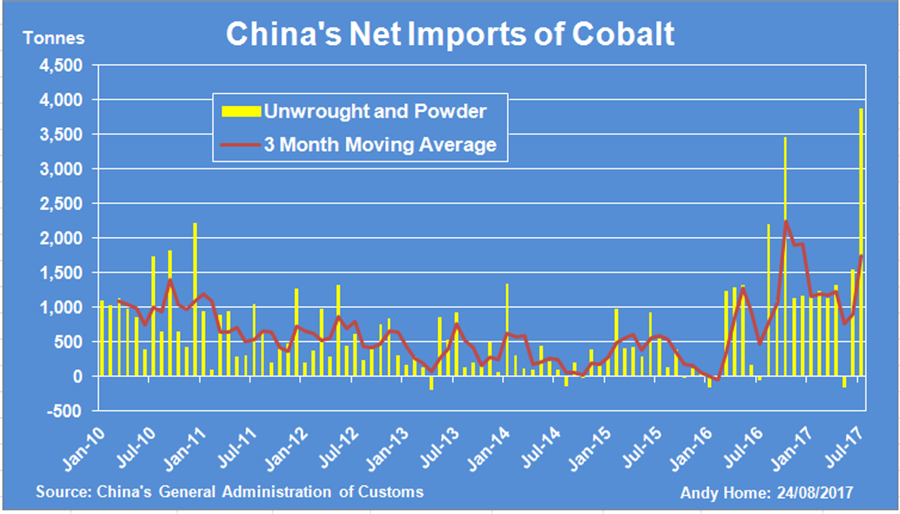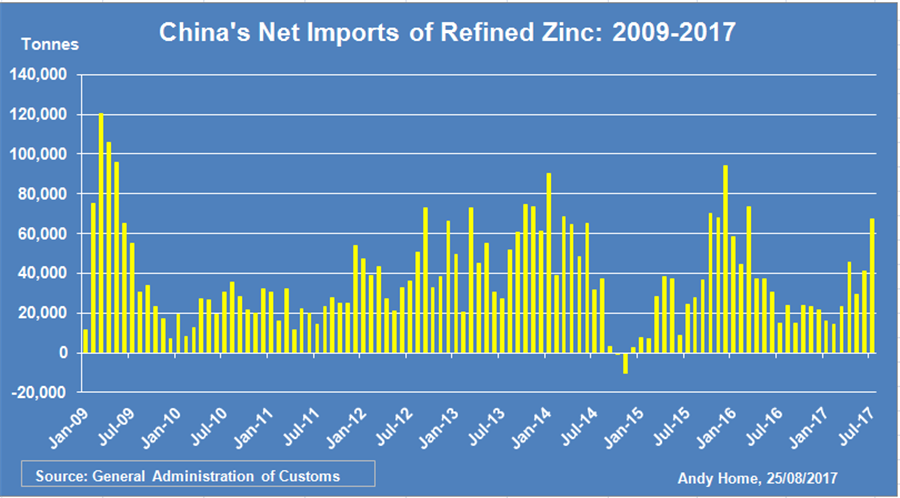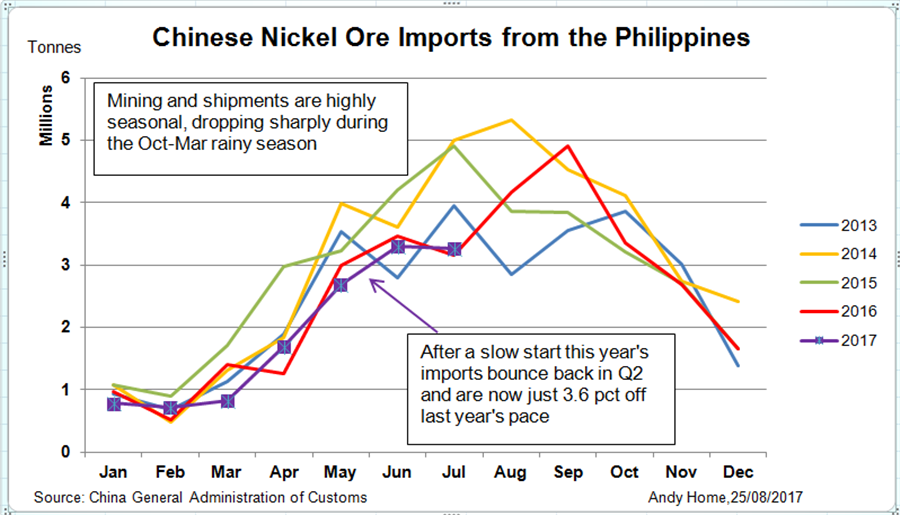China’s metals trade fragments into multiple narratives: Andy Home

China’s metals trade figures were once a spotlight on the state of the world’s manufacturing engine and price driver.
The monthly update on the country’s seemingly insatiable appetite for imported metal was hardwired into the bull market narrative at the start of the decade.
It was the drum beat to which copper marched to its bull peaks at $10,000 a tonne in early 2011. And the rest of the metals marched with it.
It’s hard to believe now, but as recently as 2012 China was a major importer of primary aluminium to the tune of half a million tonnes.
Now both markets and politicians worry about how much aluminium is coming out of China in semi-manufactured form.
It’s not that the trade figures have lost market significance. They are, after all, some of the “hardest” statistics on offer in understanding China’s sway on prices.
And the country still has plenty of influence. It’s just that its trade impact on the rest of the metallic world no longer conforms to a unifying narrative, but rather a spectrum of story lines.
The following is a round-up of some of those storylines based on the latest figures for July.
COBALT – STEP CHANGE
One of the hot commodity stories this year, cobalt is attracting unprecedented media and speculative interest thanks to its role in the green technology revolution.

China has historically been a consistent importer of cobalt raw materials and refined cobalt metal, just about all of it coming from the Democratic Republic of Congo (DRC).
But imports of unwrought metal and powders have experienced a step change over the past 12 months. They more than doubled last year and, at 10,800 tonnes so far this year, look set to do so again in 2017.
This is because of both solid demand for the battery input and to booming production in the DRC, up 27 percent to almost 40,000 tonnes in the first half of this year.
LEAD – IMPORT SURGE
Among the traditional industrial metals, the big Chinese trade surprise this year has been unglamorous lead.
China was a consistent net exporter of refined lead in the 2013-2016 period. This year, however, it is importing what are, by the standards of this market, significant tonnages. Cumulative imports of 59,000 tonnes in the January to July period are the highest since 2009.
Imports of mined concentrates are tracking last year’s levels, with North Korea remaining the second-largest supplier behind Russia. North Korean imports were 13,000 tonnes (bulk weight) in July — evidence that China’s ban on imports has yet to bite.
ZINC – WAITING GAME
The zinc market is still waiting for the sort of import surge being experienced by sister metal lead.

Bulls will take heart from July’s refined metal imports of 68,000 tonnes, the highest monthly tally since March 2016. But the year-to-date total of 248,000 tonnes is still 20 percent off last year’s pace.
Concentrate imports are up 26 percent at 1.46 million tonnes this year, largely because of a close to 50 percent surge from Peru.
If China is experiencing a raw materials squeeze and falling zinc production, as the bull storyline runs, it’s not yet evident from the country’s zinc trade.
COPPER – NOTHING TO SEE HERE
China’s latest trade figures on copper offered little in the way of fresh insight but rather an extension of the twin trends of lower Chinese imports of refined metal and higher imports of raw materials.
Refined copper imports fell by 500,000 tonnes to 1.83 million tonnes in the January-July period.
Imports of concentrates were up 3.5 percent, though that is a notable slowdown from last year’s 27 percent jump.
Scrap imports are filling any supply gap, rising 16 percent at 2.1 million tonnes (bulk weight) with little sign of the “scrap surge” fading just yet.
Indeed, the most recent copper price spike could bring more secondary material out of merchant yards.
NICKEL – RAW MATERIALS FEAST
Net imports of refined nickel were 19,700 tonnes in July, the highest monthly total so far this year but cumulative net imports of 107,000 tonnes are still down by 146,000 tonnes relative to last year.
As with copper, diminished appetite for metal in refined form is down to raw materials availability.
Graphic on imports of nickel ore from the Philippines:

There has been a lot of confusing news out of the Philippines on the state of its nickel mining sector, but China’s imports of ore from the country have exceeded 3 million tonnes in both June and July. The year-to-date total is only 4 percent lower than last year’ tally.
Regular supply from Indonesia has now resumed after that country part-reversed its ban on ore exports, helping to lift total Chinese imports of ore and concentrates by 7 percent so far this year.
Indonesia is also exporting significant amounts of nickel pig iron. Imports, classified as “ferronickel” by China’s customs, are up 69 percent at 660,000 tonnes.
TIN – TURNING EXPORTER?
China was a net exporter of refined tin in July for the first time since October 2013, which may be an ominous sign for this underperforming market.
The 10 percent export tax imposed in 2008 was removed at the start of this year and metal is starting to trickle out. The tonnages are still very modest but year-to-date exports of 900 tonnes have already exceeded 2016 and 2015 totals.
Imports of concentrate from Myanmar are still sliding, down 43 percent in the first seven months of 2017.
But any future impact on Chinese tin production is moot, given what seems to be an amply supplied domestic market, with more than 10,000 tonnes of tin registered with the Shanghai Futures Exchange.
ALUMINIUM – EXPORTS UP, MIX CHANGES
The aluminium market is punching out multi-year highs on expectations of supply hits in China from the closure of illegal capacity and the pending November prospect of more shutdowns during the country’s winter heating season.
For now, however, exports of semi-manufactured products show no signs of slowing. July’s count of 390,000 tonnes was consistent with the previous two months and cumulative exports have risen 6.6 percent to 2.5 million tonnes so far this year.
Worth noting is the continuing switch between types of product.
Exports of bar, rod and profiles have fallen by 30 percent, while those of plate, sheet and strip are up 29 percent. Exports of foil, currently the centre of a trade clash with the United States, are up 12 percent.
(Editing by David Goodman)
(The opinions expressed here are those of the author, a columnist for Reuters.)
{{ commodity.name }}
{{ post.title }}
{{ post.date }}

Comments